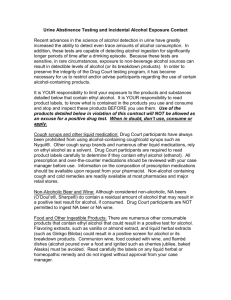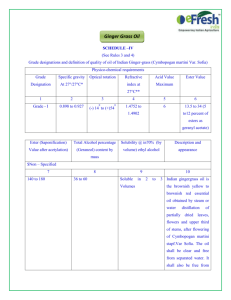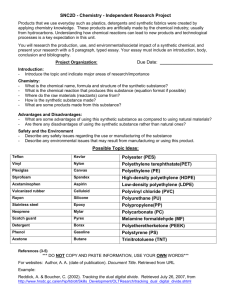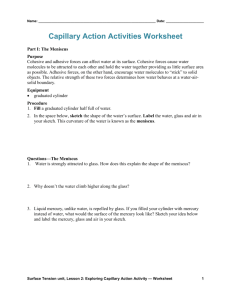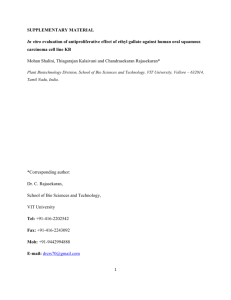Liquids activity stations
advertisement
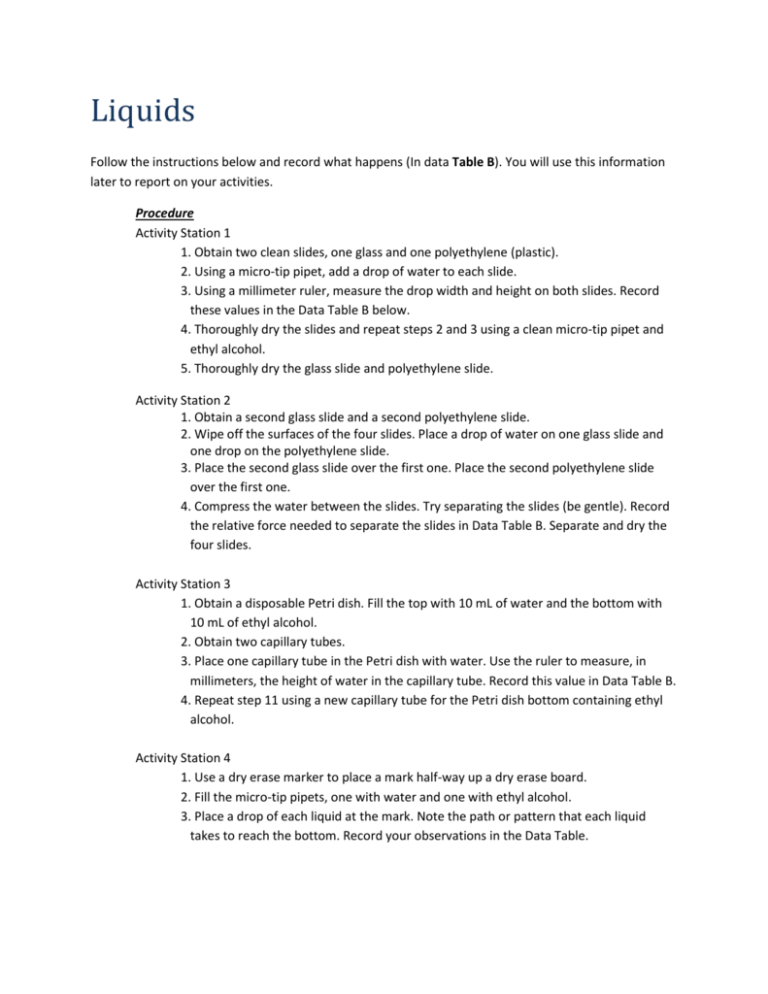
Liquids Follow the instructions below and record what happens (In data Table B). You will use this information later to report on your activities. Procedure Activity Station 1 1. Obtain two clean slides, one glass and one polyethylene (plastic). 2. Using a micro-tip pipet, add a drop of water to each slide. 3. Using a millimeter ruler, measure the drop width and height on both slides. Record these values in the Data Table B below. 4. Thoroughly dry the slides and repeat steps 2 and 3 using a clean micro-tip pipet and ethyl alcohol. 5. Thoroughly dry the glass slide and polyethylene slide. Activity Station 2 1. Obtain a second glass slide and a second polyethylene slide. 2. Wipe off the surfaces of the four slides. Place a drop of water on one glass slide and one drop on the polyethylene slide. 3. Place the second glass slide over the first one. Place the second polyethylene slide over the first one. 4. Compress the water between the slides. Try separating the slides (be gentle). Record the relative force needed to separate the slides in Data Table B. Separate and dry the four slides. Activity Station 3 1. Obtain a disposable Petri dish. Fill the top with 10 mL of water and the bottom with 10 mL of ethyl alcohol. 2. Obtain two capillary tubes. 3. Place one capillary tube in the Petri dish with water. Use the ruler to measure, in millimeters, the height of water in the capillary tube. Record this value in Data Table B. 4. Repeat step 11 using a new capillary tube for the Petri dish bottom containing ethyl alcohol. Activity Station 4 1. Use a dry erase marker to place a mark half-way up a dry erase board. 2. Fill the micro-tip pipets, one with water and one with ethyl alcohol. 3. Place a drop of each liquid at the mark. Note the path or pattern that each liquid takes to reach the bottom. Record your observations in the Data Table. Data Table B Activity station 1 Micro Slide Drop width (mm) Water Glass Polyethylene Ethyl Alcohol Glass Polyethylene Drop height (mm) Activity Station 2 Force to separate slides Circle the best answer when comparing the two materials Glass____ more / less Polyethylene____ more / less Activity Station 3 Capillary Tube Measure the rise in each capillary tube (water and ethyl alcohol) Capillary rise (mm) Water ________ mm Ethyl alcohol ________ mm Activity Station 4 Dry Erase Board Record the difference in pattern between water and ethyl alcohol Pattern of water on dry erase board _______________________________________________ _____________________________________________________________________________ _____________________________________________________________________________ . Pattern of ethyl alcohol on dry erase board __________________________________________ _____________________________________________________________________________ _____________________________________________________________________________ .


